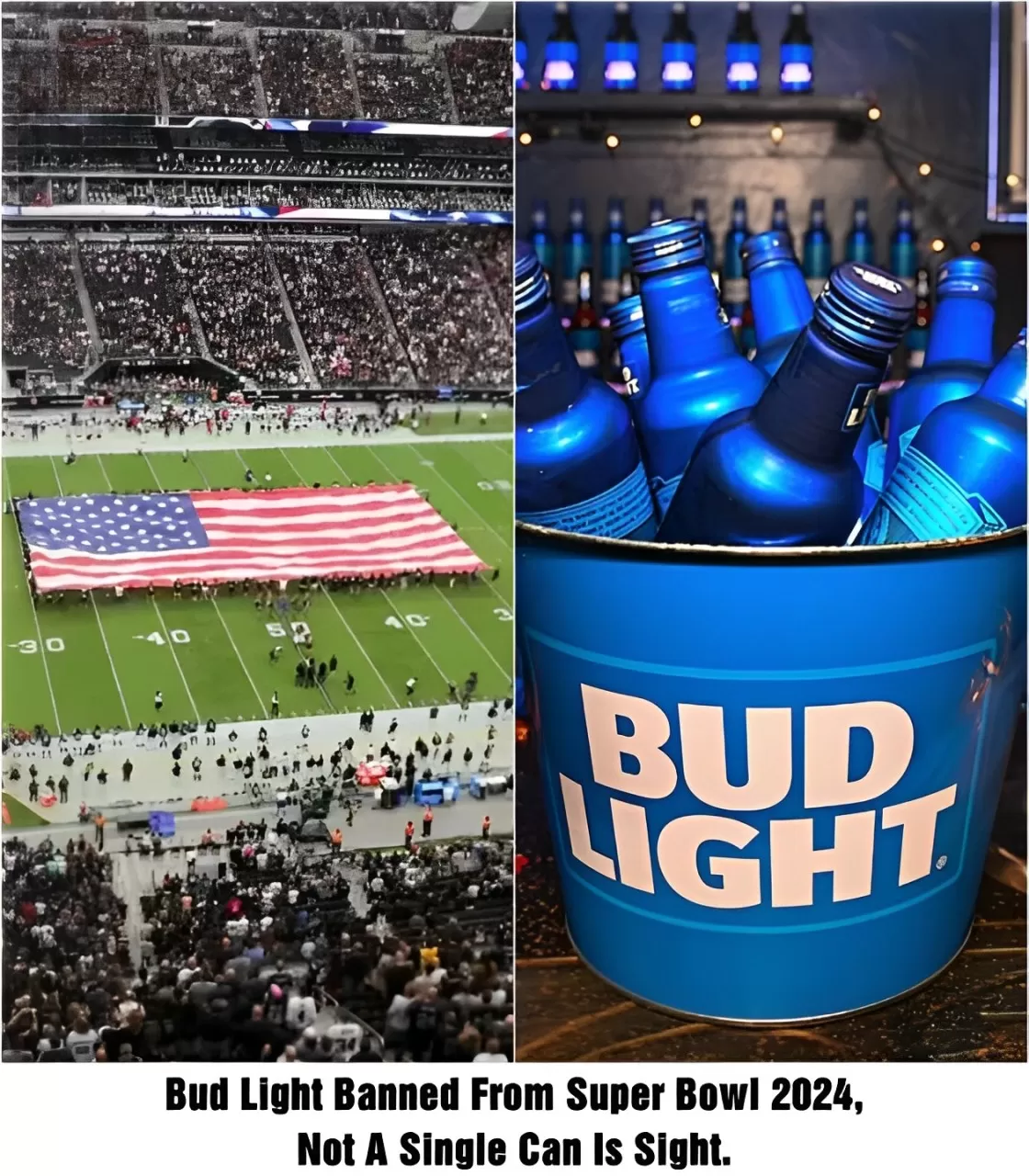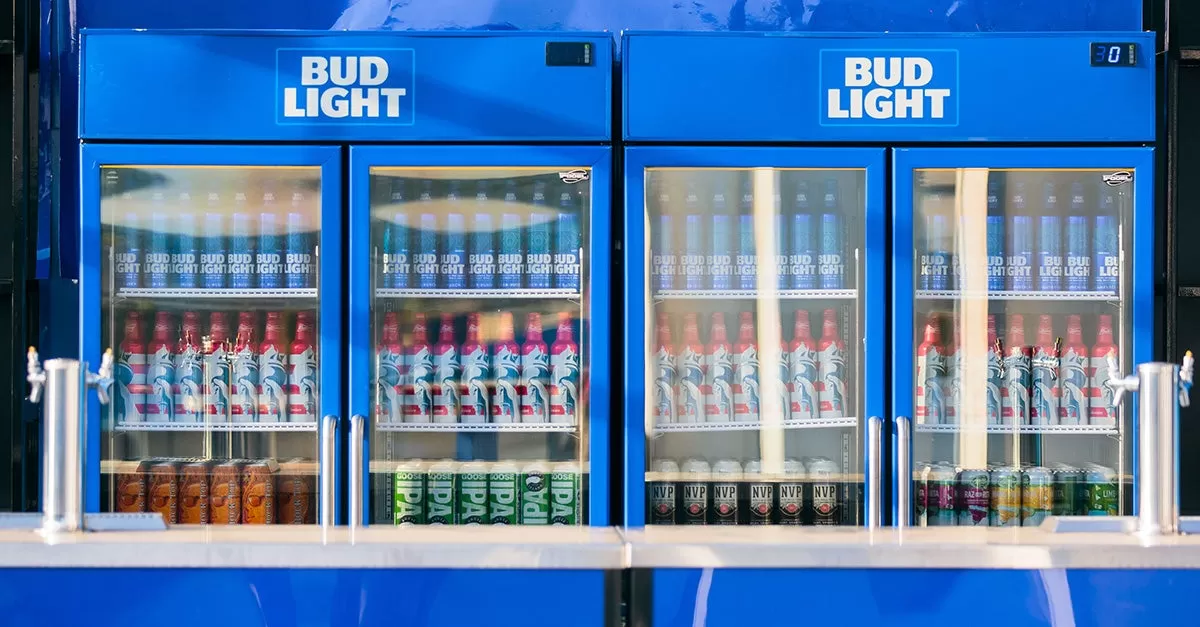In a move that has left the sports, entertainment, and beverage industries in a state of shock, Bud Light the beer that has become almost synonymous with American sports, especially the Super Bowl was noticeably missing from the lineup of Super Bowl LVIII. This unexpected development has left fans, advertisers, and market analysts scratching their heads and speculating about the reasons behind this significant omission.

For years, Bud Light has been an integral part of Super Bowl celebrations, not just as a popular beverage choice for millions of viewers but also through its iconic commercials that have become as much a part of Super Bowl culture as the halftime show and the game itself. From witty ads that capture the spirit of the times to heartfelt messages that strike a chord with a wide audience, Bud Light’s marketing strategies have consistently hit the bullseye when it comes to Super Bowl advertising. Yet, in 2024, there was not a single Bud Light can in sight, neither in the hands of spectators nor within the glitzy, multimillion-dollar ad breaks.
The absence of Bud Light from the Super Bowl festivities has sparked widespread speculation. Some are wondering if this is a strategic shift by Anheuser-Busch, Bud Light’s parent company, in response to evolving market trends and consumer preferences. Others theorize that it could be the fallout from previous controversies, such as the backlash against certain marketing campaigns or partnerships that may not have resonated as intended with all segments of Bud Light’s diverse consumer base.
One popular theory links back to Anheuser-Busch’s recent ventures into more socially conscious advertising and partnerships. The company’s attempt to engage with broader social issues and support diverse causes has been met with mixed reactions from the public. While many consumers have applauded the brand for its progressive stance, others have called for boycotts, citing various grievances. This polarized response could have prompted a strategic retreat from high-visibility events like the Super Bowl to avoid further controversy or backlash.
Economic factors cannot be ignored in this scenario. The cost of Super Bowl advertising has skyrocketed, with 30-second spots costing millions of dollars. For Anheuser-Busch, the decision to not participate in Super Bowl advertising could be a calculated move to allocate marketing resources more efficiently across different platforms and initiatives that offer a better return on investment. In an era where digital marketing can provide targeted reach and measurable outcomes, traditional TV ads, even during the Super Bowl, might not offer the same value for money as in the past.

Furthermore, the beverage industry is undergoing significant changes, with a noticeable shift towards health-conscious products, craft beers, and non-alcoholic options. Bud Light’s absence from the Super Bowl could signal a broader strategic realignment within Anheuser-Busch to adapt to these changing consumer preferences and explore new market opportunities beyond traditional beer offerings.
Bud Light’s absence was felt not just in the commercial breaks but also in the broader cultural experience of the Super Bowl. The brand’s iconic commercials are often a topic of discussion alongside the game’s highlights, and their absence left a void that other advertisers were eager to fill. This shift provided an opportunity for emerging brands and products to step into the spotlight, potentially reshaping the advertising landscape of future Super Bowls.
From a consumer perspective, the absence of Bud Light adverts may have altered the traditional Super Bowl viewing experience. However, it also highlighted the changing nature of the event itself—a platform not just for football but for a broader cultural and social dialogue, reflected in the commercials that vie for viewers’ attention during the game.
Anheuser-Busch’s decision to exclude Bud Light from Super Bowl LVIII marks a pivotal moment in the annals of Super Bowl advertising. It highlights the fluid relationship between brands and their audiences, the changing currents of social dialogue, and the imperative for corporations to thoughtfully steer through intricate cultural terrains. This move is a testament to the ever-evolving landscape of advertising and the increasing importance of social consciousness in brand strategy. It’s a clear signal that in today’s world, companies need to be more than just purveyors of products or services – they need to be active, thoughtful participants in the cultural discourse.
As we gaze into the future, the ripple effects of this decision are likely to shape not only Anheuser-Busch’s marketing strategies but also those of other major brands weighing the merits and impact of Super Bowl advertising. It brings to the fore critical questions about the role of traditional advertising in a swiftly evolving digital landscape and the strategies brands can employ to connect with diverse and occasionally polarized audiences.
In conclusion, while Bud Light’s no-show at Super Bowl LVIII may have caught many off guard, it also kickstarts a dialogue about the future of advertising, the role of major brands in societal issues, and the shifting tastes and preferences of consumers. As the dust settles, it will be intriguing to observe how Anheuser-Busch and other industry behemoths adapt and innovate in response to these challenges and opportunities. The stage is set for a fascinating evolution in the world of advertising and brand engagement.


